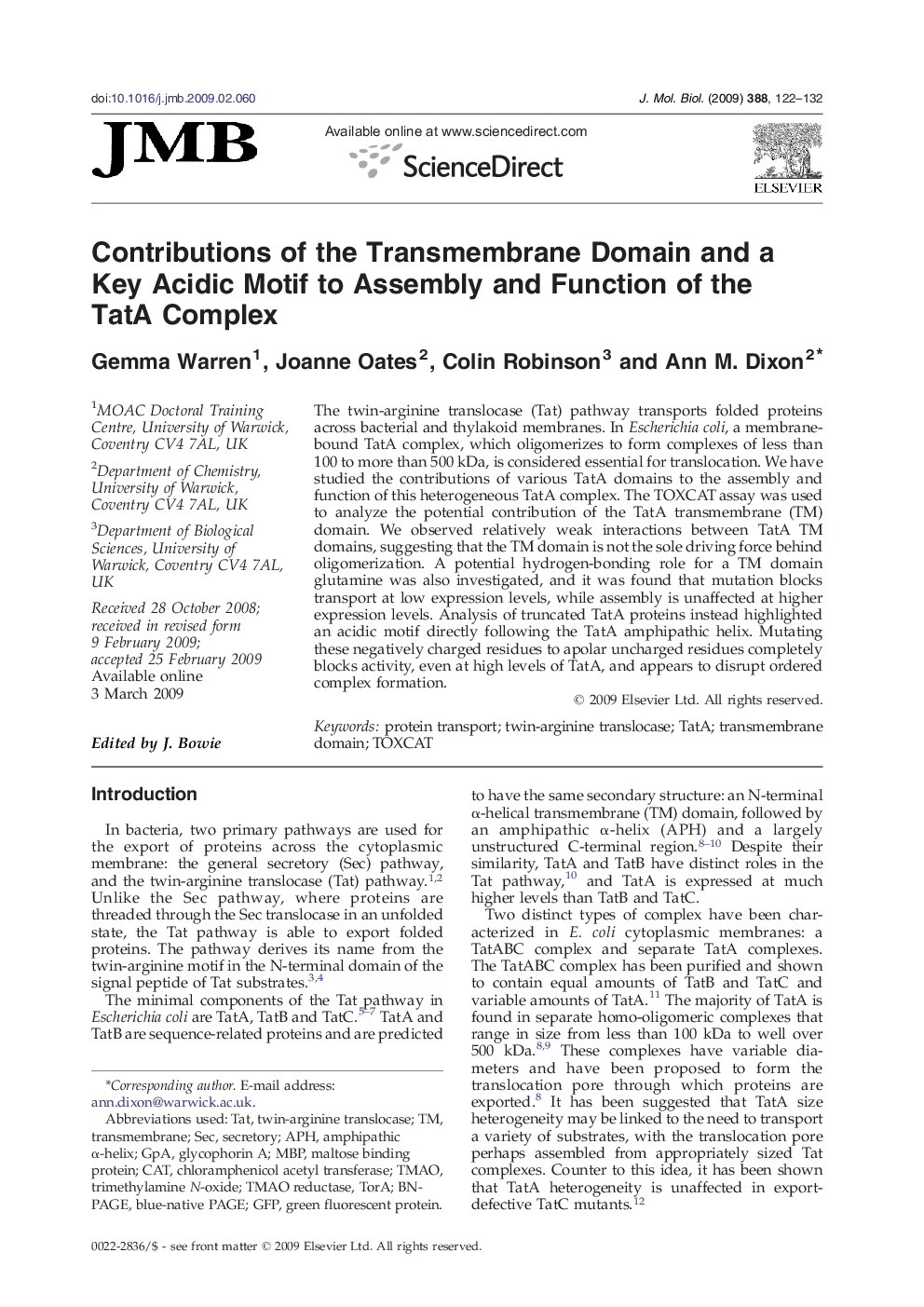| Article ID | Journal | Published Year | Pages | File Type |
|---|---|---|---|---|
| 2186542 | Journal of Molecular Biology | 2009 | 11 Pages |
The twin-arginine translocase (Tat) pathway transports folded proteins across bacterial and thylakoid membranes. In Escherichia coli, a membrane-bound TatA complex, which oligomerizes to form complexes of less than 100 to more than 500 kDa, is considered essential for translocation. We have studied the contributions of various TatA domains to the assembly and function of this heterogeneous TatA complex. The TOXCAT assay was used to analyze the potential contribution of the TatA transmembrane (TM) domain. We observed relatively weak interactions between TatA TM domains, suggesting that the TM domain is not the sole driving force behind oligomerization. A potential hydrogen-bonding role for a TM domain glutamine was also investigated, and it was found that mutation blocks transport at low expression levels, while assembly is unaffected at higher expression levels. Analysis of truncated TatA proteins instead highlighted an acidic motif directly following the TatA amphipathic helix. Mutating these negatively charged residues to apolar uncharged residues completely blocks activity, even at high levels of TatA, and appears to disrupt ordered complex formation.
